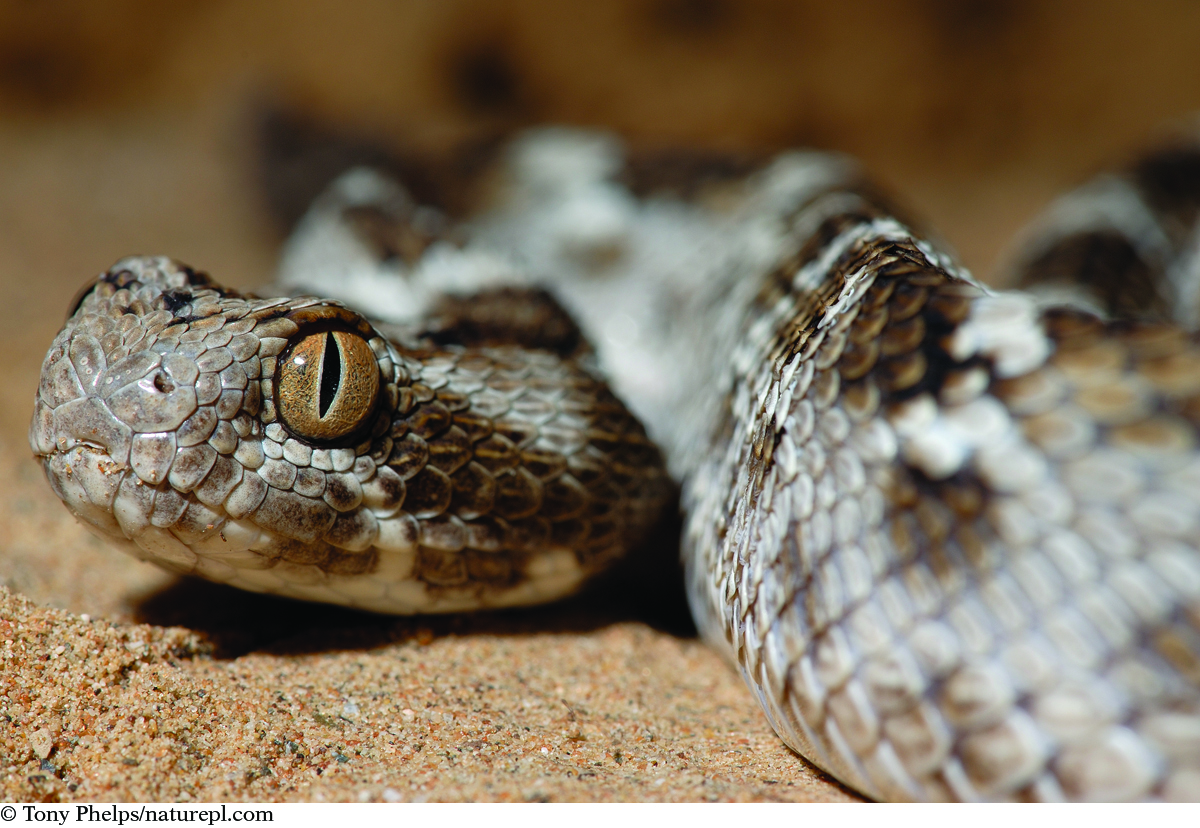Printed Page 353
Unit Introduction
| Unit 4 | | | Toxins |

Some animals produce toxins for self-defense, or to paralyze their prey. However, many toxins also have medicinal uses. For example, certain compounds in the venom of this African saw-scaled viper can help to treat a person having a heart attack.
© Tony Phelps/naturepl.com
In this unit, you will learn:
how toxins are defined
how chemists determine toxicity
the mechanisms by which toxic substances act in our bodies and what this has to do with chemical reactions

Charles D. Winters/Science Source
Why Toxins?
Chemical reactions help our bodies to process food and create new tissues. However, some chemical reactions have toxic and harmful outcomes. The toxicity of a substance is highly dependent on the dose size of that substance. Sometimes, a small amount of a compound, such as a vitamin, can be therapeutic, but a large amount can damage your health. This unit investigates chemical changes by exploring how toxic substances are measured and tracked through their transformations.